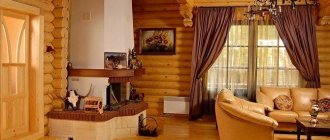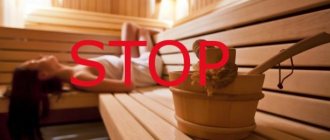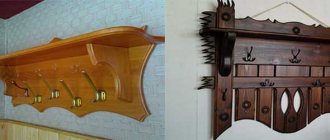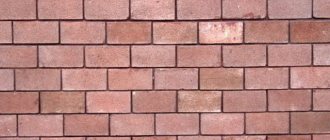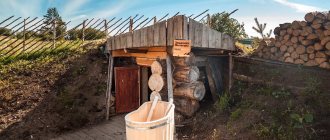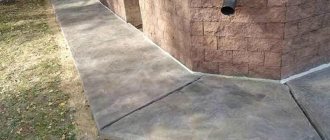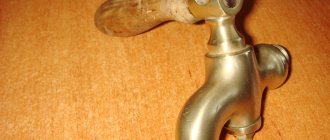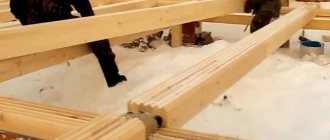Wood is a natural and beautiful material that is used in various industries and construction. However, a significant disadvantage of wood is its susceptibility to the influence of the environment and insects . It is easily affected by various parasitic colonies, absorbs dirt and is subject to mechanical and physical damage.
Wood impregnation can protect the wood structure from all these factors and even give it a more aesthetic appearance .
Types of impregnation
When deciding which antiseptic is best, first of all, you need to learn how to choose it correctly. Manufacturers produce formulations on a variety of bases and with a variety of functions.
But, in general, they are divided into means:
- on an oil, water and alcohol chemical basis,
- surface, neutral and deep penetrating impregnations,
- organic and chemical products,
- antiseptics and fire retardants,
- decorative and colorless.
All of them are used to protect wood. But some only create a surface layer, while others penetrate deeply into the structure and change its properties.
Oil impregnations have a varnish base, while water impregnations are based on compounds of sodium fluoride, boric acid and zinc chloride and penetrate the structure of the wood. Acrylic water-based compositions are popular and practically harmless, but alcohol impregnations quickly evaporate.
Antiseptics disinfect wood, fight fungus and mold, and fire retardants protect against fire. Decorative impregnations change the color of the wood, thereby achieving a decorative and beautiful coating, while colorless impregnations preserve the natural shade and texture of the wood.
Impregnation of a log house without coloring Source fire protection.com.ua
Decorative and decorative-protective
This group includes various stains, impregnating paints, impregnating varnishes, oil-waxes, drying oils, etc. For example, linen impregnation with the addition of wax, driers and natural resins is at the same time a moisture-proof, decorative and glaze treatment that gives antiparasitic and decorative effects.
Decorative and decorative-protective impregnations
Most stains are alcohol-based and organic solvent-based. Such preparations penetrate well into the structure of the material, but increase its flammability and combustibility. At the same time, there is a tinting, hard-to-wash antiseptic GOODHIM N 350, which is water-based and therefore odorless, which is characteristic of any alkyd impregnation.
Impregnants are used for deep impregnation of parts that will be exposed to operation in damp rooms, as well as in the open air. They can be used to treat furniture.
Impregnation selection criteria
Which wood preservative is best to choose depends on four criteria:
- environmental friendliness and harmlessness;
- purpose;
- composition;
- prices and efficiency of use.
Ecological cleanliness
Health safety becomes most important when treating areas where children are present. And in this case, the environmental friendliness of impregnation comes first among other factors.
Purpose
Based on the goals that need to be achieved when treating the surface, impregnations are divided according to their purpose.
For example, impregnation for boards against moisture and rotting, which of them is better indicated below, should protect the wood from fungi, mold and exposure to water. They are used in rooms with high humidity, such as baths or saunas.
There are also compositions that resist temperature changes well - frost-resistant. The addition of components that prevent combustion produces fire-retardant impregnations.
The introduction of pigments into the composition makes it possible to obtain decorative impregnations.
Impregnation of a log house with brown color Source www.s-stroy39.ru
Impregnations may also contain special UV filters and components that resist atmospheric influences. Most modern formulations have a combination of the listed qualities.
Compound
Experts advise giving priority to aqueous formulations. They are the most versatile, environmentally friendly, applied manually and mechanically.
When considering antiseptics, you should not ignore acrylic preparations. They have excellent water protection characteristics and are affordable. However, they have one drawback - the inability to work at low temperatures.
Acrylic-based impregnation Source kraski-kapitel.ru
There is one more component on the basis of which wood impregnations are produced - these are organic solvents. Such compositions have excellent protective properties, but caution should be exercised when using them due to the toxicity of many compositions.
When choosing which antiseptic for wood is better to choose, you can immediately select the appropriate color of the composition, since the impregnation can also have decorative functions and change the shade of the wood.
Consumption
When deciding which wood preservative is best, you should not lose sight of such an important indicator as material consumption. This is a common mistake many people make - paying attention to the price and not taking into account the consumption.
A high-quality composition provides reliable protection after applying a couple of layers, while cheaper ones require multi-layer coatings. As a result, purchasing high-quality compounds is more profitable than their cheap counterparts.
Application of impregnation Source tovarim.ru
Making your own water mixture
Solutions of salts in water can be prepared without even having basic skills. All you need for this is heated water and the necessary components . In addition, before starting work, you should select one of the components. This may be sodium fluoride, iron or copper sulfate.
Sodium fluoride solution
Impregnation based on sodium fluoride can be made by simply mixing this component with hot water. The sodium fluoride content should range from 0.4 to 4 percent (50–400 grams per 10 liters of water). If the wood is processed indoors, then it is better to use less sodium fluoride.
The outside of the house, gazebos, fences and benches that are located on the street are treated with a solution containing a high content of the component. In order to visually control the application of impregnation, a small amount of potassium permanganate (potassium permanganate) is additionally used. It does not change the color of the wood and disappears immediately after drying. The solution is best applied using a spray bottle.
A solution containing copper sulfate
If necessary, treat pillars that go underground, use a solution with the addition of copper sulfate. In total, about 1–2 kilograms of the component are added to 10 liters of water. This proportion requires a long impregnation and drying time, but the quality of material protection is significantly improved. It is worth noting that copper sulfate significantly changes the color of the material, so everyone chooses the proportions for themselves. The less copper sulfate is used, the lighter the solution becomes, but at the same time the protective qualities decrease.
Wood antiseptic: which one is better?
When understanding impregnations, you should pay attention to where you need to apply them: outdoors or indoors. The choice of a quality composition depends on the answer to this question.
For interior work
What is the best antiseptic for wood, if it will be located indoors, choosing is quite simple if you know that it must meet high environmental safety standards. This is the most important criterion by which you should choose a product.
Let's consider several products of decent quality.
Pinotex Interior
Pinotex Interior impregnation from an Estonian manufacturer is an excellent antiseptic for interior woodwork and does its job well. Impregnation forms a reliable protective film on the surface. The composition is based on water and when used the impregnation does not emit a strong odor.
The composition is easy to apply and does not form streaks when applied. It is characterized by uniform absorption and excellent drying speed. After processing, the structure of the wood is clearly visible.
Pinotex color map Source yaroslavna-bel.ru
The surface is matte and does not leave fingerprints. Minor damage to the material is also hidden. The only drawbacks include the appearance of counterfeit goods on our market. But this only indicates the high quality of the impregnation.
Tikkurila Suri
This composition is produced by the famous Finnish company TIKKURILA. After impregnation of the surface, a semi-matte film is formed on it. The impregnation is based on acrylic and can be tinted. The range of application of the composition is quite wide. It is allowed to treat locations with high humidity such as baths and saunas.
Treatment with this impregnation preserves the original texture of the wood and allows you to maintain constant cleanliness of the finish. It has a fairly low consumption rate and dries quickly. The film provides excellent protection against dirt and water.
Primer "Tikkurila" Source static.onlinetrade.ru
"Aquatex Rogneda Extra"
This impregnation is a product of a domestic manufacturer. It includes components that allow for comprehensive protection. For this reason, the use of this impregnation is more profitable than the use of different paint and varnish compositions with different purposes.
Impregnation allows you to protect wood from rot, fungus or blue stains. In addition, it includes UV filters and components that block atmospheric influences - sun, water, etc. The composition is also a decorative paint and varnish material. Application is allowed not only on fresh surfaces, but also on those on which some kind of impregnation has already been applied.
The advantages include not only decorative aspects, but also high-quality latex protection. The downside is the long drying time and the pungent odor emitted by the composition during impregnation.
Neomid 430 Eco
This impregnation reliably protects the wood from moisture. It is not susceptible to being washed out by water during operation and is used in difficult conditions. Experts recommend this composition for impregnating wood that has direct contact with moisture - baths, saunas, fencing garden beds, and the like.
Antiseptic not only for internal, but also for external work Source neomid-500-450-440.rf
See also: Catalog of companies that specialize in facade and finishing materials.
After impregnation, the wood does not react to moss, fungi, rot and parasites. The validity period of the composition is very impressive, according to the manufacturer, about thirty-five years. The downsides include the pungent odor emitted during impregnation and the wood being painted gray with a hint of green.
"Tex Biotex Classic Universal"
This composition, produced by us, can with full confidence be considered a universal impregnation. Although the development is domestic and produced in our country, high-tech foreign-made equipment is used during production.
The composition contains a component that resists fungi, mold and rot. Despite the antibactericidal properties, the composition is used in locations with high air humidity. In addition, it is recommended to apply a primer before using the composition.
One of the advantages is the high artistic properties of the composition. However, there are also disadvantages - a pungent odor emitted during impregnation and a rather short-lived coating. Meanwhile, this impregnation is very affordable in price.
Changing the color of wood depending on the color of the impregnation Source vdvrus.ru
"Extra Aquatex with wax"
This impregnation gives a semi-gloss appearance when used and perfectly highlights the wood grain. It has high antibacterial protection properties. The impregnation includes powerful UV filters and nanoparticles. They prevent products from fading when exposed to sunlight.
In addition, the composition contains natural oils of natural origin and wax. These components not only provide effective artistic properties, but also protect the surface from cracking. During operation, the impregnation does not emit any pungent odors, but the protective layer is quite short-lived.
What to look for when choosing a wood preservative
When choosing a product, they take into account not only the covering properties, consumption, inexpensive cost, but also the type of tree itself. Or rather the stage of its finishing. Different means will be optimally suited for different purposes.
Different means will be optimally suited for different purposes.
How to protect wood immediately after felling
The timber must be treated with antiseptic substances on all sides. There are special products for this task that create good initial protection. However, at the shrinkage stage, the products no longer work well, and re-treatment is always required.
It is important to properly treat the lower parts of the frame, which may come into contact with the ground. Folk remedies are widely used for this purpose: they use copper sulfate, used automobile oil, and bitumen, which is preheated. Or they purchase more effective chemicals.
The timber must be treated with antiseptic substances on all sides.
What compounds are suitable for treating rafters
Water-soluble antiseptics are standardly used to cover rafters. They must have antimicrobial properties, protect against insects and pests, and against the formation of fungi. This type is characterized by quick-drying properties, ease of application, air permeability, and depth of penetration into the wood.
Water-soluble antiseptics are standardly used to cover rafters.
How to save boards and beams from fungus
For boards, it is better to choose special products that can cope with a large degree of damage. The following stand out here: “Dali”, “Stop-mold”, “Alpa”, “Biotol-spray”. It is important to start dealing with the problem on time; the remedies may not be able to cope with significant problems.
For boards, it is better to choose special products that can cope with a large degree of damage.
What is suitable for indoor spaces
Inside the house, the main task is to choose a non-toxic and environmentally friendly antiseptic that will not harm the health of its residents. The composition should not contain harmful elements. If you want to leave the natural color and pattern of the wood, use colorless products.
Inside the house, the main task is to choose a non-toxic and environmentally friendly antiseptic that will not harm the health of its residents.
What to choose for treating external walls, gazebos and terraces
For external treatment of wooden structures, reinforced compounds are selected, which include protective components against many natural factors. Resistance to ultraviolet radiation, liquids, pests and insects, and long service life are important.
How many layers will need to be applied to the surface is determined by the hiding power of the product and the age of the tree. If the wood is too dark, you may need to apply additional paint to achieve a beautiful appearance.
Resistance to ultraviolet radiation, liquids, pests and insects, and long service life are important.
Video description
The video shows comparative tests of impregnations:
"ECOHOUSE"
This composition is distinguished by a very affordable price, but despite its availability, it also meets high quality indicators. The impregnation is highly environmentally safe and is not based on organic solvents.
The composition resists the appearance of fungal diseases on wood. Moreover, it actively treats existing lesions. Impregnation does not change the texture of the surface and does not impede the penetration of air into it. It has excellent adhesion, so after impregnation the wood can be coated with any paint and varnish materials.
The disadvantages of the composition include significant consumption during impregnation and a long drying period. Also, when opened, the composition has a pungent odor. However, this is compensated by a high level of protection and an affordable price.
Fire retardants for fire protection
When talking about wood as an excellent building material, one should not forget about its property of high flammability. For this reason, it would not be entirely correct to ignore compounds that protect wood from burning.
NEOMID 450
This composition is an effective method of protection and is intended for both indoor and outdoor use. The impregnation components, in contact with wood, produce a material that does not ignite or burn well.
Also, the impregnation is endowed with high levels of antibactericidal protection. The manufacturer guarantees seven years of fire resistance and ten years of resistance to fungal diseases. Available in both bleached and tinted versions.
A clear advantage of the composition is double surface protection. The only downside is the long drying time - about two weeks.
"Senezh Ognebio Prof"
This impregnation is also a whole complex for impregnating wood. In addition to fire protection, it creates a good barrier to the penetration of biological threats. It is also protected from water and temperature fluctuations.
An example of color change under the influence of impregnation Source allegroimg.com
It is not advisable to process parts that have direct contact with the ground. It is worth noting that when the surface is impregnated, it changes its color somewhat, but the texture does not suffer. The composition is intended for impregnation of already affected areas of the surface.
When working with impregnation, there is absolutely no odor and it can be applied using any method. One of the disadvantages is the rather high consumption during use.
The benefits of homemade solutions
Do-it-yourself impregnation has many advantages .
- Lower cost.
- There is no chance of buying counterfeit products.
- Minimum level of toxicity.
- In the case of bitumen or oil solutions, the effectiveness of protection increases.
Branded antiseptics also have their advantages over DIY solutions.
- Easy preparation. Simply mix the prepared solution with water or solvents.
- Selective influence.
- Most often, homemade antiseptics are more effective.
- Simple wood processing.
Everyone ultimately decides for themselves what to choose. Branded antiseptics increase the effectiveness of protection, while homemade solutions can take a comprehensive approach to improving the stability of wood. In addition, cost is also a big factor, because when you prepare the impregnation yourself, you spend much less money. We must also not forget that solutions prepared by hand are used not only for processing wood outside the home. Furniture, doors, windows and other things made of wood in a house or apartment can be covered with an additional layer of protection and without worrying about the environment.
Briefly about the main thing
In conclusion, we emphasize that in order to maximize the service life of wooden products, impregnation of them with the described or similar compositions is strictly mandatory. This is especially true for places with high air humidity or direct contact with soil and water.
When choosing impregnations, you need to pay attention to their purpose, whether they are used for interior or exterior work, environmental friendliness, cost-effectiveness of consumption and the main composition of which they are composed. On the market you can find suitable universal and high-quality products that will protect and preserve wood from moisture, fungi and insects, and from fire.
Ratings 0
What destroys a tree?
Wood is an extremely unstable material that is destroyed due to exposure to external factors. We are talking not only about cases where houses are built entirely from wood, but even about furniture. The main reasons that contribute to the destruction of wood are:
- clay bacteria;
- fungi;
- grinder beetles;
- moisture.
Clay bacteria can weaken the structure of wood in a short period of time, and fungi, even after they are removed, leave dark spots. A humid environment produces mold spores that destroy wood products. In addition, mold can cause deterioration in human health.
Fortunately, you can increase resistance to such external factors with the help of special antiseptics . They must be used at every stage of house construction, as well as:
- during the production of lumber;
- during the production of furniture, building materials from wood;
- at high humidity.
